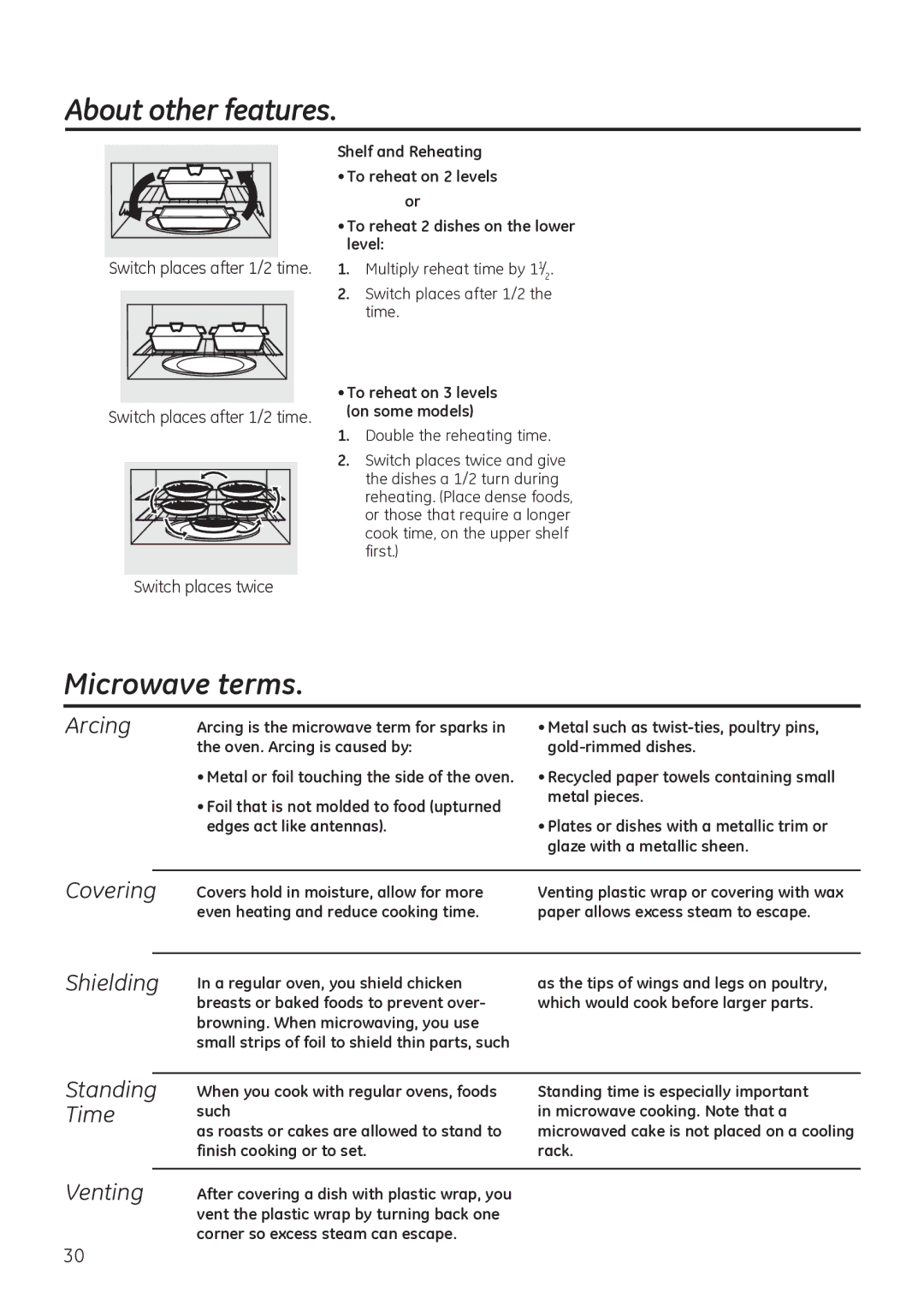JNM3151, JVM3150 specifications
The GE JVM3150 and JNM3151 are two prominent models in General Electric's lineup of over-the-range microwave ovens, combining convenience with modern design and advanced cooking technologies. Both models offer a range of features tailored to enhance the culinary experience in any kitchen.One of the standout features of both the JVM3150 and JNM3151 is their powerful cooking performance. With a cooking power of 1,000 watts, these microwaves deliver consistent heating, allowing users to cook or reheat meals quickly and efficiently. The microwaves come equipped with multiple power levels, providing versatility for preparing a wide variety of dishes, from delicate defrosting to rapid cooking.
Both models feature GE's easy-to-use controls, which include a digital display and convenient one-touch buttons for popular cooking functions. This user-friendly interface makes it simple for anyone to operate the microwave, whether you're reheating leftovers or cooking a full meal.
A highlight of the JVM3150 and JNM3151 is their sensor cooking technology. This innovative feature automatically adjusts cooking time and power levels based on the moisture level detected in the food, ensuring optimal results without the guesswork. This technology takes the hassle out of microwave cooking, allowing users to achieve perfectly cooked dishes every time.
In terms of design, the JVM3150 and JNM3151 boast a sleek, modern appearance that fits seamlessly into various kitchen decors. Available in multiple finishes, including stainless steel, these microwaves not only perform well but also enhance the overall aesthetic of the kitchen space.
Another essential characteristic of these microwave ovens is their integrated ventilation systems. They are designed to be installed above the range, providing effective ventilation to eliminate smoke, steam, and odors from the kitchen. This dual function saves counter space while keeping the air in the kitchen clean and fresh.
Additionally, the JVM3150 and JNM3151 feature a large interior capacity, accommodating various dish sizes and cooking needs. The microwaves also come with a turntable for even cooking, ensuring that food is evenly heated throughout the interior.
Overall, the GE JVM3150 and JNM3151 microwave ovens offer an excellent blend of style, performance, and innovative technology. Whether you're a novice cook or a culinary expert, these models provide the necessary tools to enhance the cooking experience, making them valuable additions to any kitchen.

